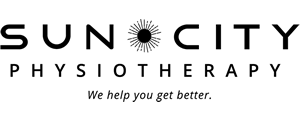Running Injuries
With the fall clock running down, many of us weekend warriors are being chased down by the injury bugs. Following a long, hot season of pounding the trails, it’s not uncommon for some aches to show to up. For both the avid year-round runners and the warm-weather aficionados, the mileage starts to add up. With the mileage comes various ailments to our hips, knees and ankles. This can be contributed to poor training habits, technical errors or the body just hates us. Regardless of the reason, the point of the fact is there is a broad spectrum as to why the body breaks down.
Looking at it anatomically — and biomechanically — from a physiotherapist’s standpoint, two of the most common areas where a runner’s body can break down are the hips and the feet. This article will focus on the hips. The hip can be a cause of a variety of common injuries encountered by runners. These include patella-femoral syndrome, aka runner’s knee, IT band pain, or the dreaded plantar fasciitis. Weakness or imbalance in the muscles of the hip, or tightness of the hips, can change how the joints below your hips move.
For the runners that have been told their knee and/or feet pain is due to flat feet, or over-pronation, it could very well be due to one of the above-mentioned reasons related to the hip. The hip is an important part of running as it is designed to take the bulk of the impact when we land, it is also responsible for generating the energy that moves us forward. Because humans are inherently designed to compensate for faulty systems in our bodies, we have become very good at using different body parts and movements to achieve the same goals. In running, when the hips aren’t doing their job, the muscles and joints below can take up the slack. Overtime, these systems can be overworked and this is when we can start getting achey joints, and chronic muscle and tendon injuries.
With a physiotherapist, the initial assessment includes: comparison of both walking and running patterns (viewed from in front, behind, and from the side); strength assessment; lower extremity alignment; and education regarding the findings. A plan can then be put together that best fits with the runner’s goals, including activities aside from running. There is not a single solution, but let us work with you to find your stride.
